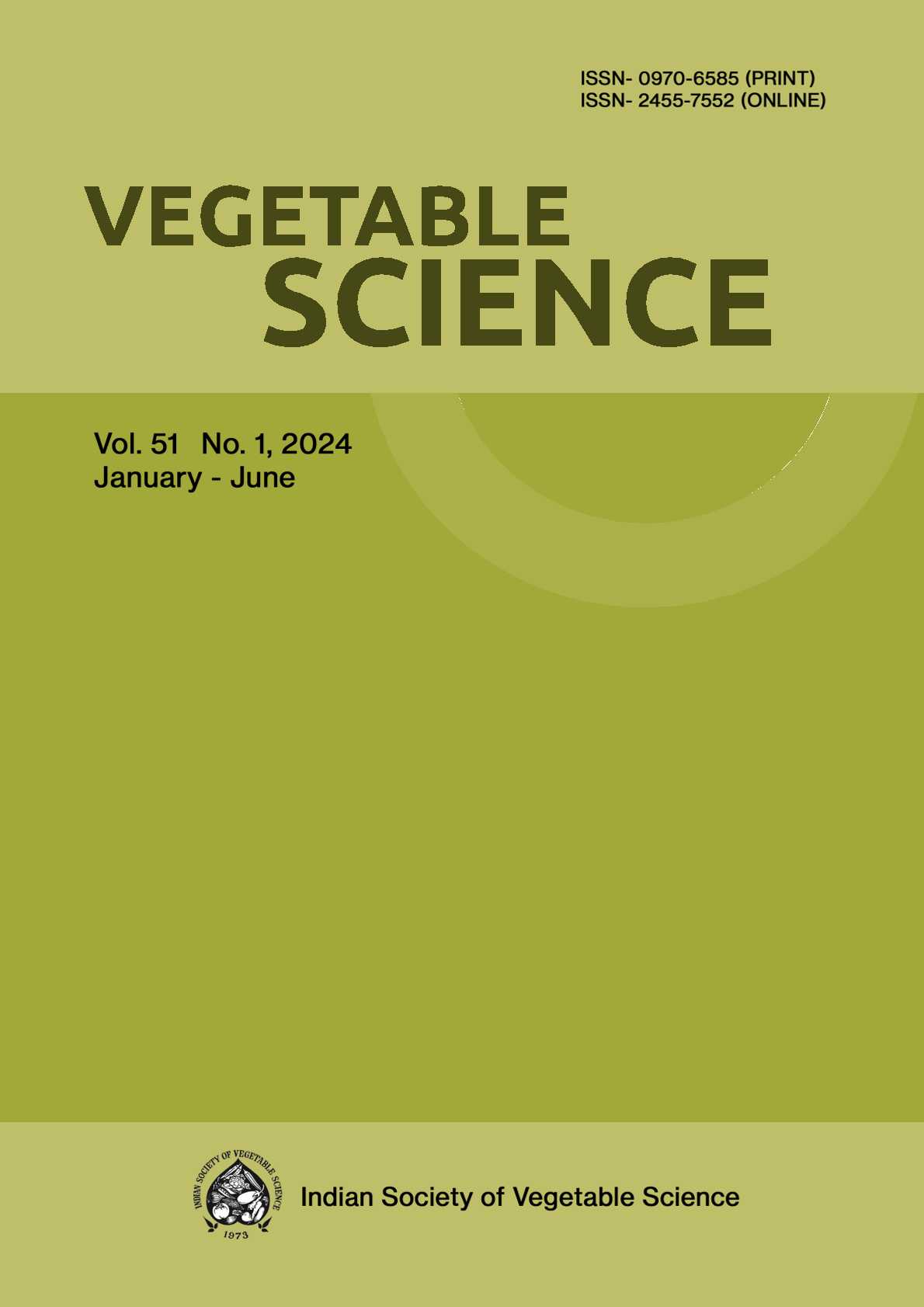Evaluation of genetic resources and deciphering the inheritance of powdery mildew resistance in pea (Pisum sativum L.) genotypes, EC865944 and EC865975
DOI:
https://doi.org/10.61180/vegsci.2024.v51.i2.05Keywords:
Powdery mildew, Erysiphe, Pisum, Resistance and Inheritance and Yield.Abstract
Pea, a major cool-season vegetable legume, suffer substantial yield and quality losses due to powdery mildew (PM), caused by the parasitic fungus species Erysiphe. This disease can lead to yield reductions of 25–70%, affecting quality of produce with notable economic impact. Resistance breeding is one of the most environmentally sustainable strategies to manage this devastating disease. Over a period of three year, a total of 172 diverse pea accessions were field evaluated for powdery mildew resistance (PMR), among which 35 accessions displayed a disease score rating of 0-1, indicating a disease incidence of ≤1%. Notably, three accessions—IC296678, EC865944, and EC865975—demonstrated high resistance levels against Erysiphe pisi. Histopathological observations showed that no conidia germination occurred on the resistant lines IC296678, EC865975 and EC865944 at both 24- and 48-hours post-inoculation, indicating a pre-invasive type of immunity in these genotypes. To investigate the gene action and inheritance patterns of PM resistance in EC865944 and EC865975, we utilized five cross combinations viz., EC865975 × Kashi Udai, EC865944 × VRPM-903, Kashi Ageti × EC865944, EC865944 × Kashi Nandini, and EC865975 × Kashi Shakti. Analysis of the F2 population from these crosses revealed a segregation pattern of one resistant to three susceptible, indicating the presence of a single recessive gene in both the genotypes. Horticultural characterization of these genotypes showed that both belonged to the late-maturing group of peas, characterized by a taller growth habit, an average pod weight ranging from 5.5 to 7.5 g, and an average yield of 75–100 g per plant. These newly identified PMR sources provide invaluable genetic resources, not only for Indian breeders but also for researchers globally, offering a significant step forward in sustainable pea improvement.
Downloads
Published
Issue
Section
License
Copyright (c) 2024 Jyoti Devi, Anmol S Yadav, Rakesh K Dubey, Vidya Sagar, K.K. Pandey, Sudarshan Maurya (Author)

This work is licensed under a Creative Commons Attribution-NonCommercial-NoDerivatives 4.0 International License.






